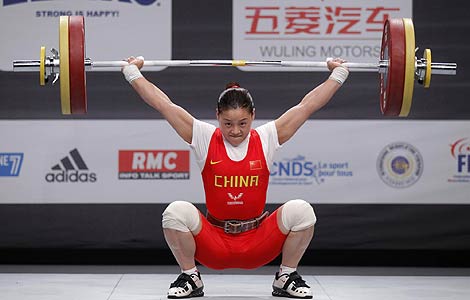October imports post surge
Updated: 2011-11-11 10:53
By Diao Ying and Ding Qingfen (China Daily)
|
|||||||||
BEIJING - Trade growth with the United States, China's second largest trading partner, slackened while trade with emerging economies remained robust, according to the latest customs data.
For the first 10 months, trade between China and US grew by 16.8 percent to $363 billion, far lower than the 24.3-percent average of overall trade growth during the same period, according to the General Administration of Customs on Thursday.
On the other hand, bilateral trade between China and other APEC members, including Australia and Russia, soared. From January to October, trade between China and Russia spiked 43.8 percent to $64.9 billion; trade with Australia advanced by 34.6 percent, according to customs.
China has been buying more from its trade partners. In October, imports surged 28.7 percent to $140.46 billion from the previous year. Exports increased 15.9 percent to $157.49 billion, the lowest rate of growth in five months. The result was a trade surplus of $17.3 billion, down 36.5 percent year-on-year.
The surge in imports reflects the impact of China's trade policies, analysts said. The government has been trying to increase imports to achieve a better trade balance with its trade partners. Its policies include credit for importers and lower import tariffs, Premier Wen Jiabao said earlier this year.
Imports will exceed $1.7 trillion in 2011 and total imports will amount to about $10 trillion over the next five years, Commerce Minister Chen Deming wrote recently.
China's Assistant Commerce Minister Yu Jianhua said China hopes that at the ongoing APEC meeting in Hawaii, leaders will further create free and open trade in the Asia-Pacific region, support multilateral trade systems and oppose trade protectionism.
For the first 10 months, China imported 560 million tons of iron ore, up 10.9 percent, a customs statement said. Imports of machinery and electric products increased 15.6 percent to $619.9 billion, while vehicle imports were up 27.6 percent to 820,000.
"The nearly 29-percent import increase caught us by surprise," said Hu Yanni, a macroeconomist at China Securities Co Ltd. "The data show that domestic demand remains pretty good. Investment needs in China are better than expected."
A recent appreciation of the yuan has also boosted imports, said Hu, adding that China has more room to increase domestic demand. Infrastructure construction in the western part of China and a stronger push to invest in agriculture have the potential to further improve import demand, she said.
Yu said he hopes APEC members work to remove discriminatory trade restrictions on high-tech products and support the transfer of technology during business agreements.
"Robust domestic demand will help to support the soft landing of China's economy," Zhang Zhiwei, an analyst with Nomura Securities, said in an e-mailed report.
The government has more room to increase domestic demand, Hu said.
Infrastructure construction in the western part of the country and investment in agriculture have the potential to further improve import demand, she said.
But the outlook for exports is less positive. Analysts said that the pace of export growth would keep sliding next year as Europe, China's largest foreign market, remained mired in a debt crisis, while the outlook for the US, the second-largest market, was uncertain.
"Europe is China's largest market, and it has not shown any positive signs of improvement," said Hu. Shipment growth to the European Union slowed to 7.5 percent in October, compared with a 9.8 percent increase in September, customs data show.
Weakening external demand is causing hard times for small and medium-sized enterprises (SMEs) in southeast China, the country's main export hub.
"It has become pressing for these companies to transform themselves," said Chen Yongfang, a trade official in Guangzhou, capital of Guangdong province.
Some small companies, boxed in by a stronger yuan and rising labor costs, may have to close, according to Zhang Yujing, president of the China Chamber of Commerce for Import & Export of Machinery & Electronic Products. "This is a wake-up call for the survivors to modernize," he said.
"Many small-scale businesses will die because they have been competing on low prices instead of advanced technology," said Chen Hanhui, vice-director of Tech-Long Packaging Machinery Co Ltd, China's leading packaging machinery manufacturer whose clients include Procter & Gamble Co and Coca-Cola Co.
Infrastructure construction in the western part of the country and investment in agriculture have the potential to further improve import demand, she said.
But the outlook for exports is less positive. Analysts said that the pace of export growth would keep sliding next year as Europe, China's largest foreign market, remained mired in a debt crisis, while the outlook for the US, the second-largest market, was uncertain.
"Europe is China's largest market, and it has not shown any positive signs of improvement," said Hu. Shipment growth to the European Union slowed to 7.5 percent in October, compared with a 9.8 percent increase in September, customs data show.
Weakening external demand is causing hard times for small and medium-sized enterprises (SMEs) in southeast China, the country's main export hub.
"It has become pressing for these companies to transform themselves," said Chen Yongfang, a trade official in Guangzhou, capital of Guangdong province.
China Daily











